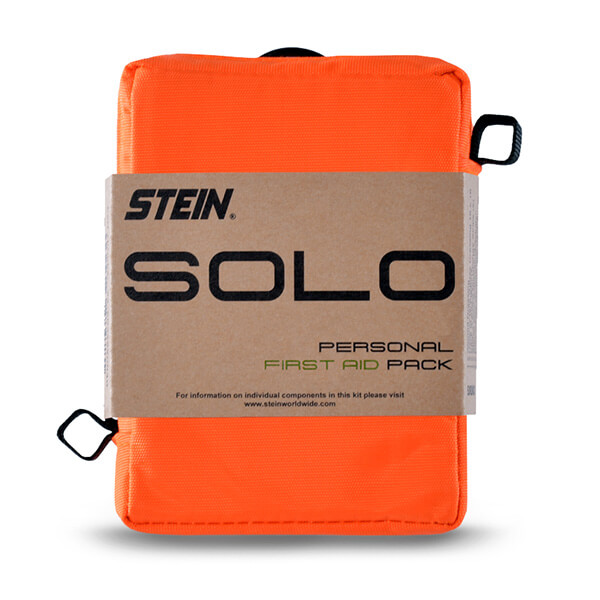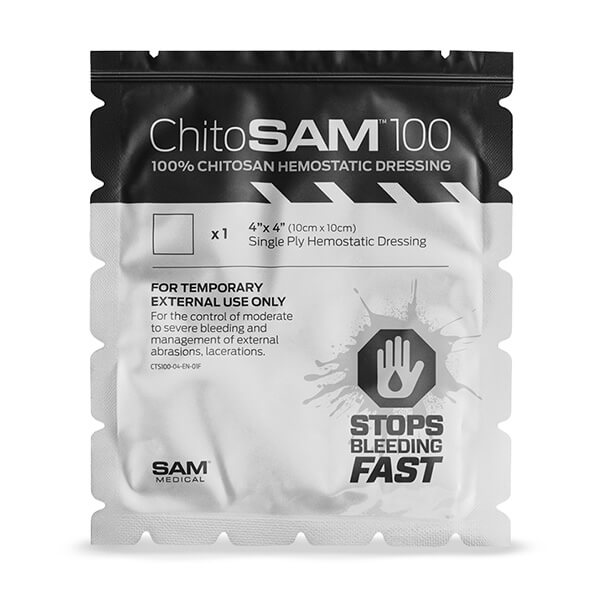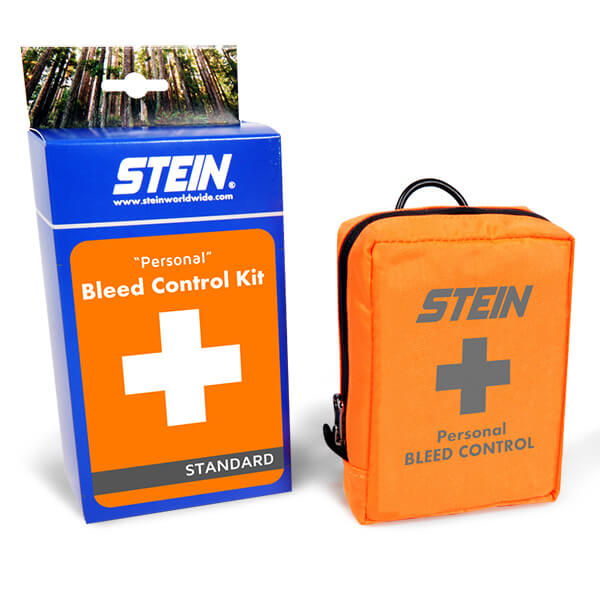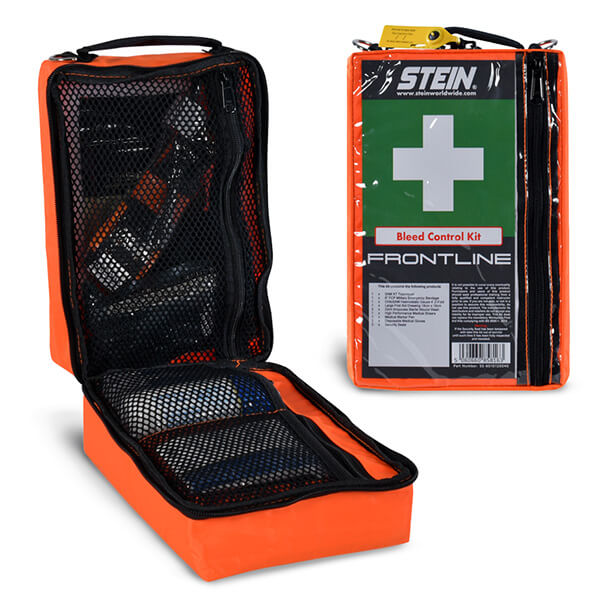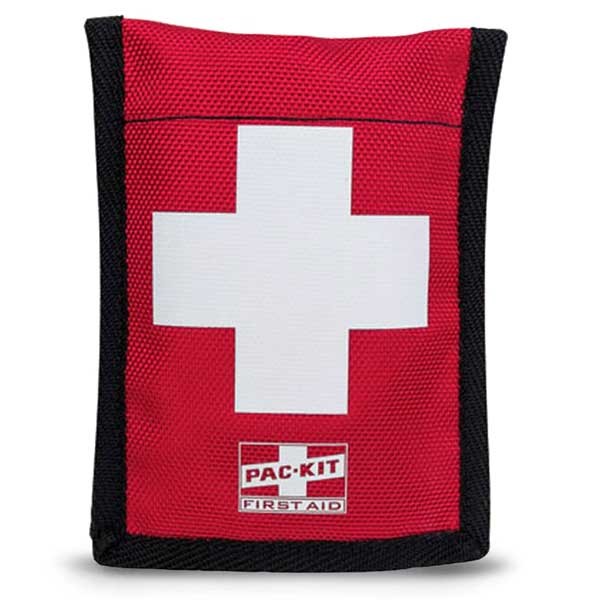The Emergency Bandage (aka The Israeli Bandage) consolidates numerous wound treatments into a single unit and is essential for managing blood wounds resulting from Silky or chainsaw cuts:
- Non-adherent pad: Eliminates the risk of causing pain and having the wound re-open upon removal of the bandage.
- Pressure Applicator: Creates immediate direct pressure to the wound site.
- Secondary Sterile Dressing: Keeps the wound area clean and maintains the pad and pressure on the wound firmly in place, including immobilization of the injured limb or body part.
- Closure Bar: Enables closure and fixation of the Emergency Bandage at any point, on all parts of the body: no pins and clips, no tape, no velcro, no knots.
- Quick and easy application and self-application: Designed with the end-user in mind; for the first-aid trained and the lay caregiver.
- Significant per treatment time and cost savings.
Ease of Operation The Emergency Bandage has efficient blood staunching capability and offers ease of operation:
- The sterile, non-adherent pad is placed on the wound.
- Immediate direct pressure to the wound site is achieved by wrapping the elasticized woven leader over the topside of the bandage pad where the specially designed pressure bar is situated. The pressure bar is designed to readily accept and hold the wrapping leader.
- After engagement of the pressure bar, wrapping the leader in any direction around the limb or body part and onto the pressure bar forces the pressure bar down onto the pad, creating the direct pressure needed to bring about homeostasis.
- The pressure bar also facilitates bandaging. The elastic bandage uses the rigid shape of the pressure bar to change direction while bandaging, providing more options for effective dressing of the wound.
- Subsequent wrappings of the leader secure and maintain the pad in place over the wound, covering all the edges of the pad to act as a sterile secondary dressing. The bandage leader is woven to remain at its full width and will not bunch up or twist itself into a rope.
- The closure system of the bandage is multi-functional yet simple, quick, and familiar. Situated at the end of the leader is a closure bar (dowel with hooking clips) at each end to secure the wrapping leader, similar to how a pen is secured in a shirt pocket. The closure bar holds the bandage securely in place over the wound site.
- If additional pressure is required, the closure bar is easily removed from its first closure position and inserted between previous layers of the leader directly above the protruding pressure bar and rotated. This rotation of the closure bar acts to further press down the pressure bar onto the wound to exert blood-staunching pressure. The closure bar is then used as before to secure the dressing.
HOLIDAY HOURS Christmas-New Year 2025 - 2026.
FREE SHIPPING on orders over $250. NO INTERNATIONAL SHIPPING.
| Under $250 |
Shipping Fee |
|---|
| Auckland |
$6.90 |
| North Island |
$9.90 |
| South Island |
$12.90 |
| Orders Over $250 |
FREE* |
Orders with Rural Delivery addresses may take longer than stated to arrive.
SUPPLY CHAIN DISRUPTION
Due to factors out of our control, Treetools is experiencing random shipping delays and supply issues that may result in some gear not being available either in-store and/or online. We apologise for any inconvenience this may cause.
*Free Shipping excludes overweight products.
NO INTERNATIONAL SHIPPING - Treetools is a 'kiwi only' affair.
Find out more about Treetools Shipping and Return Policy here.
All parcels require a signature on delivery unless requested otherwise.
Accurately tracking the life of a product is paramount for your safety
At Treetools, we prioritize your safety above all else, so we cannot accept returns on safety equipment. This policy ensures that your gear is always brand new, safe, and traceable to our trusted manufacturers and suppliers. We understand the critical role this equipment plays in your safety, potentially even preserving your life during climbs or work aloft. Therefore, we urge you to choose carefully before making your purchase. Additionally, please note that suitably trained and qualified individuals should use the climbing and rigging equipment listed on our website. We want to reassure you of our unwavering commitment to safety. Thank you for your understanding and commitment to safety.
Non-Returnable Items: Due to safety and hygiene reasons, PPE gear that has been opened, used, or worn cannot be returned. This includes, but is not limited to, helmets, lanyards, harnesses, friction cords and ropes.
Return Conditions for Unused Items: Return Conditions for Unused Items: Unused items in their original, unopened packaging with intact seals can be returned within 30 days of purchase with proof of purchase.
Defective Products: Items with manufacturer defects can be returned or exchanged within the warranty period, regardless of packaging status. Please contact customer service for return authorization (RMA) and instructions.
Documentation Required: Proof of purchase and return authorization are required for all returns.
Inspection Process: All returned items will undergo a rigorous inspection to ensure they meet return criteria. Items failing inspection will be returned to the customer.
Refund and Exchange Options: Refunds will be issued to the original payment method or as store credit. Exchanges are subject to availability.
Restocking Fee: 25% restocking fee for non-defective returns.
It is crucial that you select compatible gear for your specific configuration to ensure maximum safety. Failure to do so may result in severe consequences. We highly recommend that you choose the correct diameter rope that matches the hardware you are using. Please note that safety products cannot be returned due to configuration incompatibility. Therefore, we strongly advise you to conduct thorough research or ask us for clarification before making a purchase. Your safety is our top priority.




